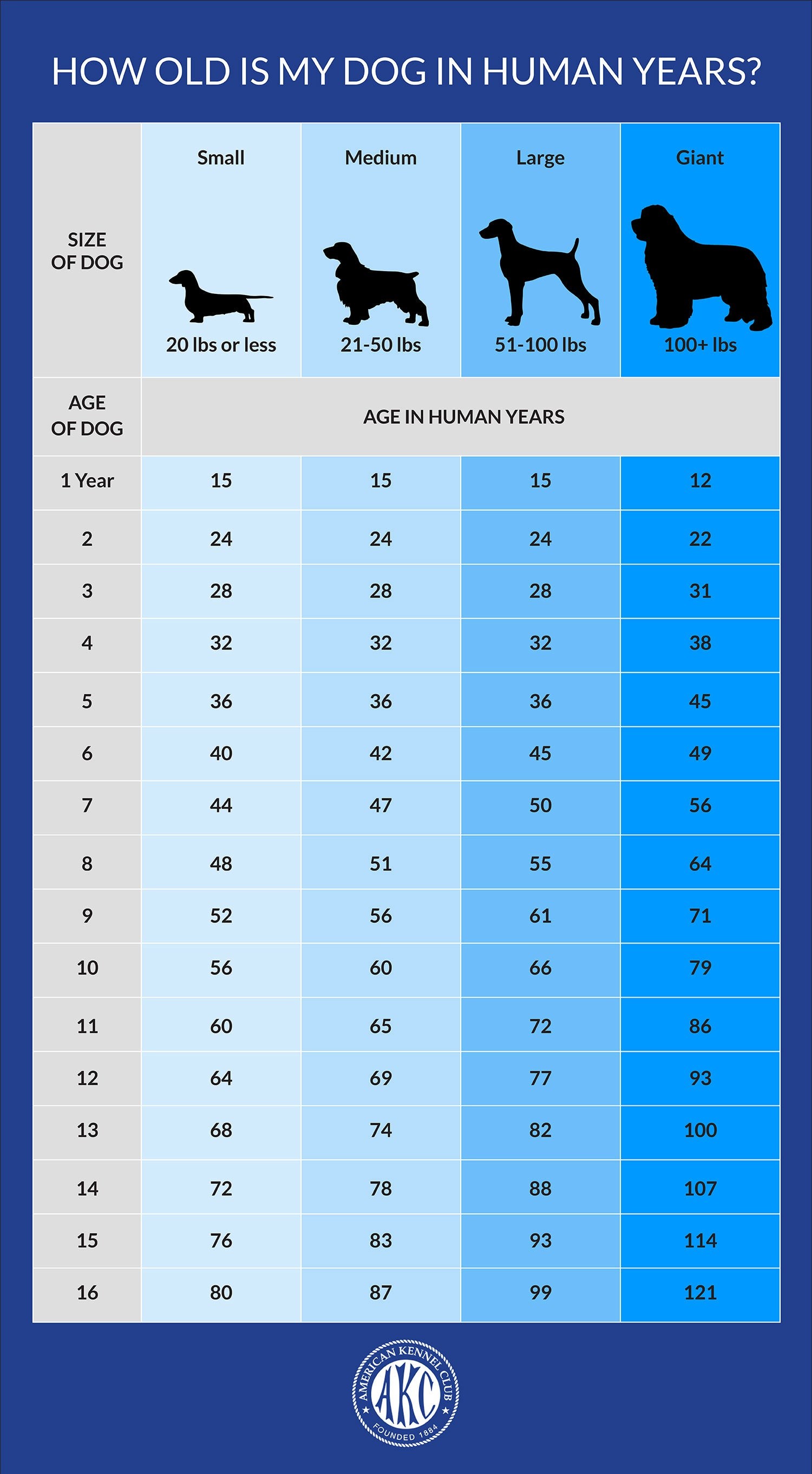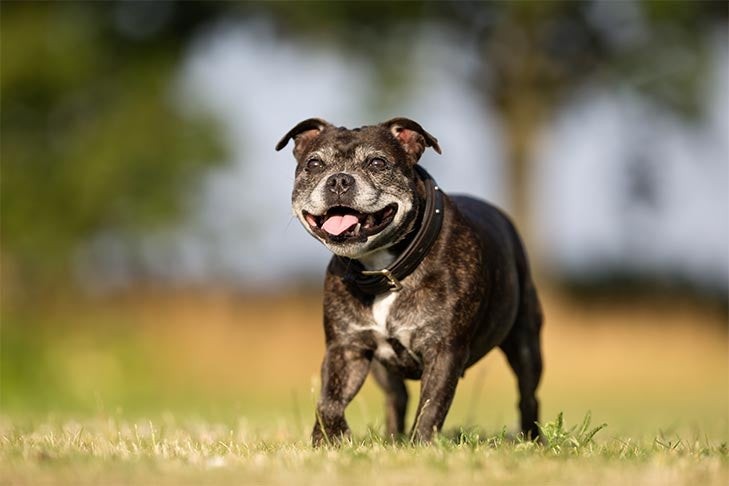Are you curious about how many dog years equate to human years and want a reliable conversion? At COMPARE.EDU.VN, we unravel the complexities of dog aging and provide an in-depth comparison to human years, offering a science-backed perspective beyond the outdated “multiply by 7” myth, ensuring you understand your canine companion’s age in relatable terms. Discover accurate methods for understanding canine aging and explore factors influencing lifespan using life stage comparisons, breed-specific aging, and health indicator analysis.
1. Understanding the Dog Years to Human Years Myth
The conventional wisdom suggests that one dog year equals seven human years. This simple formula has been a popular way to estimate a dog’s age in human terms since the 1950s. However, this is a gross oversimplification and doesn’t account for the varying rates at which dogs age throughout their lives.
The “7-year rule” is deeply ingrained in popular culture, as Kelly M. Cassidy, a curator at the Charles R. Connor Museum at Washington State University, points out. Despite its persistence, experts agree that a more nuanced approach is needed to accurately compare dog years to human years.
1.1. Origins of the 7:1 Ratio
The origin of the 7:1 ratio is somewhat speculative, but it’s believed to be based on a simple comparison of average lifespans. In the past, humans lived to around 70 years, while dogs lived to about 10 years. This led to the approximation that each dog year was equivalent to seven human years.
William Fortney, a veterinarian at Kansas State University, suggests that the 7:1 ratio may have been a marketing strategy. He told the Wall Street Journal that it was a way to educate the public about the rapid aging of dogs compared to humans, mainly from a health perspective, and to encourage owners to bring their pets for annual check-ups.
1.2. Why the 7:1 Ratio is Inaccurate
While the 7:1 ratio is easy to remember, it fails to consider the complex aging process in dogs. Dogs age more rapidly in their early years and then slow down as they get older. Additionally, breed size and genetics play a significant role in a dog’s lifespan.
The American Veterinary Medical Association (AVMA) offers a more accurate guideline:
- The first year of a medium-sized dog’s life equals about 15 human years.
- The second year equals about nine human years.
- After that, each human year is approximately five years for a dog.
This guideline provides a more realistic estimate of a dog’s age in human terms, but it’s still a generalization.
2. Factors Affecting a Dog’s Aging Process
Several factors influence how quickly a dog ages, making it challenging to create a one-size-fits-all conversion chart. These factors include breed size, genetics, diet, and overall health.
2.1. Breed Size and Lifespan
One of the most significant factors affecting a dog’s aging process is its breed size. Smaller dogs tend to live longer than larger dogs. For example, a Chihuahua may live 15 years or more, while a Great Dane may only live 7 to 10 years.
The reason for this difference in lifespan is not fully understood, but researchers have proposed several theories. One theory suggests that larger dogs age at an accelerated pace, with their lives “unwinding in fast motion.” Another theory suggests that the rapid growth of large dogs may lead to a higher risk of abnormal cell growth and cancer.
2.2. Genetics and Predisposition to Diseases
Genetics play a crucial role in a dog’s lifespan and susceptibility to certain diseases. Some breeds are predisposed to specific health problems, such as hip dysplasia, heart disease, or cancer, which can shorten their lifespan.
Breed-specific health concerns can significantly impact a dog’s quality of life and longevity. Responsible breeders carefully screen their dogs for genetic diseases to minimize the risk of passing them on to future generations.
2.3. Diet and Exercise
A healthy diet and regular exercise are essential for a dog’s overall well-being and can influence its lifespan. Overweight dogs are more likely to develop health problems such as diabetes, heart disease, and joint issues, which can shorten their lives.
Providing your dog with a balanced diet that meets its nutritional needs and ensuring it gets enough exercise can help it maintain a healthy weight and reduce the risk of age-related diseases.
2.4. Veterinary Care
Regular veterinary care is crucial for maintaining a dog’s health and detecting potential problems early on. Annual check-ups, vaccinations, and parasite prevention can help prevent diseases and ensure that any health issues are addressed promptly.
Senior dogs may require more frequent veterinary visits to monitor age-related changes and manage any chronic conditions. Early detection and treatment of health problems can significantly improve a dog’s quality of life and extend its lifespan.
3. More Accurate Methods for Calculating Dog Years
Given the limitations of the 7:1 ratio, researchers have been exploring more accurate methods for calculating dog years. One promising approach is based on epigenetic changes in DNA.
3.1. The Epigenetic Clock Study
A 2019 study by researchers at the University of California San Diego proposed a new method for calculating dog age based on changes made to human and dog DNA over time. This method utilizes an “epigenetic clock” that tracks DNA methylation, a process that alters DNA activity without changing the DNA sequence itself.
The researchers performed targeted DNA sequencing in 104 Labrador Retrievers spanning a 16-year age range and compared their epigenetic clocks to those of humans. The results allowed them to derive a formula for adjusting dogs’ ages to “human years”:
- human_age = 16ln(dog_age) + 31
Where ln(dog_age) is the natural logarithm of the dog’s age.
3.2. Limitations of the Epigenetic Clock Study
While the epigenetic clock study offers a more scientific approach to calculating dog years, it has some limitations. The study only included Labrador Retrievers, so the formula may not be accurate for other breeds.
Different breeds age differently, and the UCSD formula may lack enough variables for conclusive results. However, the science-backed formula is more useful than the debunked “multiply by 7” myth.
3.3. Online Dog Age Calculators
Several online dog age calculators use different formulas and factors to estimate a dog’s age in human years. These calculators often consider breed size, weight, and other variables to provide a more personalized estimate.
While online calculators can be helpful, it’s important to remember that they are still based on averages and may not be entirely accurate for every dog. Consult with your veterinarian for a more accurate assessment of your dog’s age and health.
4. Dog Lifespan Comparison Table
| Dog Size | First Year (Human Years) | Second Year (Human Years) | Each Additional Year (Human Years) | Average Lifespan (Years) |
|---|---|---|---|---|
| Small | 15 | 9 | 4 | 12-16 |
| Medium | 15 | 9 | 5 | 10-14 |
| Large | 14 | 10 | 6 | 8-12 |
| Giant | 12 | 10 | 7 | 7-10 |



Please note that these are approximate values, and individual dogs may vary.
5. Understanding Canine Aging Stages
Just like humans, dogs go through different life stages, each with its unique characteristics and needs. Understanding these stages can help you provide the best care for your canine companion.
5.1. Puppy Stage (0-1 Year)
The puppy stage is a period of rapid growth and development. Puppies require a diet rich in nutrients to support their growing bodies. They also need plenty of socialization and training to become well-adjusted adults.
During this stage, puppies are highly energetic and curious. They need lots of playtime and mental stimulation to prevent boredom and destructive behaviors.
5.2. Adult Stage (1-7 Years)
The adult stage is when dogs reach their physical and mental maturity. Adult dogs require a balanced diet and regular exercise to maintain their health and weight.
During this stage, dogs are typically less energetic than puppies but still require daily exercise and mental stimulation. Training and socialization should continue throughout the adult stage to reinforce good behaviors.
5.3. Senior Stage (7+ Years)
The senior stage is when dogs begin to show signs of aging. Senior dogs may experience a decline in energy levels, mobility, and cognitive function. They may also be more prone to age-related diseases such as arthritis, heart disease, and cancer.
Senior dogs require a diet that is lower in calories and fat to prevent weight gain. They may also benefit from joint supplements and other medications to manage pain and improve mobility. Regular veterinary check-ups are essential to monitor age-related changes and address any health concerns promptly.
6. Breed-Specific Aging Considerations
Different dog breeds age at different rates and have different health concerns. Understanding the specific needs of your dog’s breed can help you provide the best care and ensure a long and healthy life.
6.1. Small Breed Aging
Small breeds tend to live longer than larger breeds and may not show signs of aging until they are 10 years or older. However, small breeds are prone to certain health problems such as dental disease, patellar luxation, and tracheal collapse.
Regular dental cleanings and preventative care can help maintain the health of small breed dogs. Maintaining a healthy weight and providing joint supplements can help prevent joint problems.
6.2. Medium Breed Aging
Medium breeds typically live 10 to 14 years and may start showing signs of aging around 7 to 8 years old. Medium breeds are prone to health problems such as hip dysplasia, elbow dysplasia, and certain types of cancer.
Responsible breeding practices and regular veterinary check-ups can help minimize the risk of these health problems. Providing a balanced diet and regular exercise can help maintain a healthy weight and prevent joint problems.
6.3. Large Breed Aging
Large breeds tend to have shorter lifespans than smaller breeds and may start showing signs of aging as early as 5 to 6 years old. Large breeds are prone to health problems such as hip dysplasia, bloat, and certain types of cancer.
Feeding large breed puppies a diet specifically formulated for large breeds can help prevent rapid growth and reduce the risk of joint problems. Regular veterinary check-ups and preventative care are essential for maintaining the health of large breed dogs.
7. Health Indicators and Aging Signs in Dogs
Recognizing the signs of aging in dogs can help you provide the best care and address any health concerns promptly. Common signs of aging in dogs include:
- Graying muzzle
- Decreased energy levels
- Weight gain or loss
- Stiffness or difficulty moving
- Cloudy eyes
- Hearing loss
- Dental problems
- Changes in appetite or thirst
- Increased urination or defecation
- Cognitive decline
If you notice any of these signs in your dog, consult with your veterinarian for a thorough examination and to discuss appropriate treatment options.
8. Common Health Concerns in Senior Dogs
Senior dogs are more prone to certain health problems than younger dogs. Common health concerns in senior dogs include:
- Arthritis
- Heart disease
- Kidney disease
- Liver disease
- Cancer
- Diabetes
- Cognitive dysfunction syndrome (CDS)
- Dental disease
Early detection and treatment of these health problems can significantly improve a dog’s quality of life and extend its lifespan.
9. Caring for Senior Dogs
Caring for senior dogs requires some adjustments to their diet, exercise routine, and living environment. Here are some tips for caring for senior dogs:
- Feed a diet formulated for senior dogs
- Provide regular, low-impact exercise
- Provide a comfortable and supportive bed
- Keep the environment warm and dry
- Provide ramps or steps for easy access to furniture
- Maintain regular veterinary check-ups
- Provide pain management if needed
- Keep the mind active with puzzles and games
- Be patient and understanding
With proper care and attention, senior dogs can continue to enjoy a happy and fulfilling life.
10. Conclusion: Enhancing Your Understanding of Dog Aging with COMPARE.EDU.VN
While the exact conversion of dog years to human years remains an estimate, understanding the factors that influence a dog’s aging process can help you provide the best care for your canine companion. By considering breed size, genetics, diet, and overall health, you can gain a more accurate understanding of your dog’s age in human terms.
For comprehensive comparisons and resources to assist you in making informed decisions about your pet’s health and well-being, visit COMPARE.EDU.VN.
Are you struggling to compare dog food brands, veterinary services, or pet insurance options?
Visit COMPARE.EDU.VN today to find detailed comparisons, expert reviews, and user feedback to help you make the best choices for your furry friend. Don’t wait, empower yourself with knowledge and provide your dog with the best possible care.
Contact us:
Address: 333 Comparison Plaza, Choice City, CA 90210, United States
Whatsapp: +1 (626) 555-9090
Website: COMPARE.EDU.VN
FAQ: Frequently Asked Questions About Dog Aging
1. Is the “multiply by 7” rule accurate for calculating dog years?
No, the “multiply by 7” rule is an oversimplification and doesn’t account for the varying rates at which dogs age throughout their lives.
2. What factors affect a dog’s aging process?
Factors affecting a dog’s aging process include breed size, genetics, diet, exercise, and veterinary care.
3. Do small dogs live longer than large dogs?
Yes, small dogs generally live longer than large dogs.
4. What is the epigenetic clock study?
The epigenetic clock study is a research method that calculates dog age based on changes made to human and dog DNA over time.
5. What are the stages of a dog’s life?
The stages of a dog’s life are puppy (0-1 year), adult (1-7 years), and senior (7+ years).
6. How can I tell if my dog is aging?
Signs of aging in dogs include a graying muzzle, decreased energy levels, weight gain or loss, stiffness, cloudy eyes, hearing loss, and dental problems.
7. What are some common health concerns in senior dogs?
Common health concerns in senior dogs include arthritis, heart disease, kidney disease, cancer, and cognitive dysfunction syndrome (CDS).
8. How should I care for a senior dog?
Care for a senior dog by providing a diet formulated for senior dogs, regular low-impact exercise, a comfortable bed, and regular veterinary check-ups.
9. Can I extend my dog’s lifespan?
While you can’t guarantee a longer lifespan, you can improve your dog’s quality of life and potentially extend its lifespan by providing proper care, a healthy diet, regular exercise, and veterinary care.
10. Where can I find more information about dog aging and care?
You can find more information about dog aging and care on compare.edu.vn, which offers detailed comparisons, expert reviews, and user feedback to help you make informed decisions about your pet’s health and well-being.
